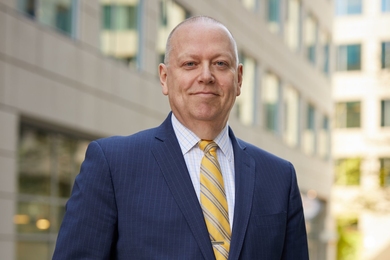CAMBRIDGE, MA--MIT researchers are developing a technique that could be another arrow in the government's quiver aimed at detecting bombs or drugs smuggled aboard aircraft.
The technique will shoot a beam of neutrons at a suitcase or other object of interest to identify elemental compositions indicative of explosives or contraband. The researchers are using a small, potentially portable accelerator located on campus to produce the neutrons, which are also being used in a separate study to detect corrosion in metals.
"It's an example of technology that was developed for high-energy physics and the 'Star Wars' program that is now being used in a variety of other applications," said Richard C. Lanza, a principal research scientist in the Department of Nuclear Engineering and principal investigator for the aircraft security work. (Dr. Lanza noted that the MIT accelerator is of the same type that was to be used in the canceled superconducting supercollider, and was in fact manufactured by the same company.)
When a beam of fast (as opposed to slow, or thermal) neutrons is shone into an object, the neutrons react with the nuclei of materials in the object. These reactions produce byproducts-gamma rays-that are distinctive for any given material. So by analyzing the gamma rays, researchers can identify the general composition of materials inside an object.
"The technique could show, for example, that a certain area within an object has a very high amount of nitrogen and oxygen," said Dr. Lanza. "That could indicate an explosive, because explosives tend to have high amounts of both nitrogen and oxygen as compared to more common materials, like sausages."
Dr. Lanza stresses, however, that the technique is far from ready for use in an airport. Many technical issues have yet to be resolved. For example, the researchers are currently building different gamma-ray detectors for the accelerator to determine which will work best. Using a technique borrowed from X-ray astronomers, they hope to improve sensitivity by a factor of ten or more over previous work.
Even if the technique can be made to consistently detect certain explosives or drugs, there's a catch. "If you're doing a physics experiment, you know that nature isn't really going to conspire against you," Dr. Lanza said. "But when you're dealing with drugs and explosives, you're dealing with people who could slightly change the composition [to avoid detection]."
This is especially frustrating with respect to drugs. "The difference between drugs and explosives is that explosives won't work if you dilute them too much," Dr. Lanza said.
As a result, Dr. Lanza sees the neutron technique as one of many tools that could be used together to detect contraband. "We're trying to raise a whole variety of barriers, because no single barrier can do everything," he said. For example X-rays, which are being used right now to screen luggage, are much less expensive to produce than neutrons, but can't "see" plastic explosives.
"So to solve this problem you've got to look in all directions," Dr. Lanza concluded.
Nuclear Engineering graduate students Erik B. Iverson, David W. Fink, and Li Zhang are working with Dr. Lanza on the aircraft-security research, which is sponsored by the Federal Aviation Administration Technical Center in Atlantic City. Following is the URL for more information on FAA work to this end: http://www.tc.faa.gov/asl/asl.html>.





